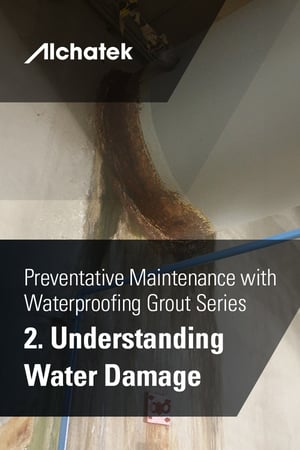
 Water's destructive capacity stems from its ability to penetrate and alter the very materials that buildings are made of. Here are some key ways in which water inflicts damage:
Water's destructive capacity stems from its ability to penetrate and alter the very materials that buildings are made of. Here are some key ways in which water inflicts damage:- Freeze/Thaw Cycles: In colder climates, water that has seeped into cracks can freeze. As water freezes, it expands, widening these cracks. When it thaws, it contracts, leaving space for more water to enter. This cycle of freezing and thawing can progressively worsen cracks, leading to significant structural damage over time.
- Corrosion: Water is a major catalyst for corrosion, especially in structures with steel reinforcements. When water and oxygen interact with steel, it leads to rust formation. This rust not only weakens the steel itself but can also cause it to expand, affecting the surrounding concrete.
- Concrete Deterioration: Concrete, though sturdy, is porous. Continuous exposure to water can lead to a chemical reaction known as carbonation, lowering the pH of the concrete and weakening its structural integrity. Moreover, water can carry harmful salts and chemicals that further deteriorate concrete. This is compounded when the structure is on the coast and in a high chloride environment. Over 1/3 of the US population lives in coastal counties.
- Wood Rot and Mold Growth: In buildings with wooden elements, prolonged exposure to moisture can lead to wood rot, compromising structural strength. Additionally, damp environments are breeding grounds for mold and mildew, posing health risks and further degrading building materials.
- Damage to Electrical and Utility Systems: Water infiltration in areas housing electrical systems can lead to short circuits, increasing the risk of fire. Similarly, utility systems, such as heating and plumbing, can also be compromised, leading to costly repairs and potential safety hazards.
The Urgency of Addressing Even Minor Leaks
Often, minor leaks or small signs of water damage are overlooked and considered inconsequential in the grand scheme of building maintenance. However, as we've seen, even small amounts of water can set off a chain reaction of deterioration. Addressing these issues promptly can prevent a minor problem from escalating into a major one. Regular inspections and maintenance are key to identifying and resolving these issues early.
Proactive Measures Save More Than Just Costs
Understanding the science behind water damage underscores the critical need for proactive measures. Addressing water-related issues promptly is not just about saving costs; it’s about preserving the structural integrity and safety of buildings. As property managers and owners, recognizing the signs of water damage and acting swiftly can make all the difference in safeguarding your property and the people who use it.



